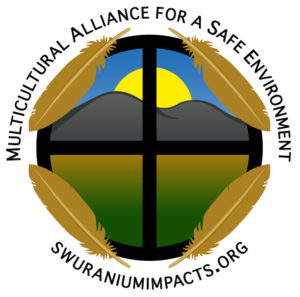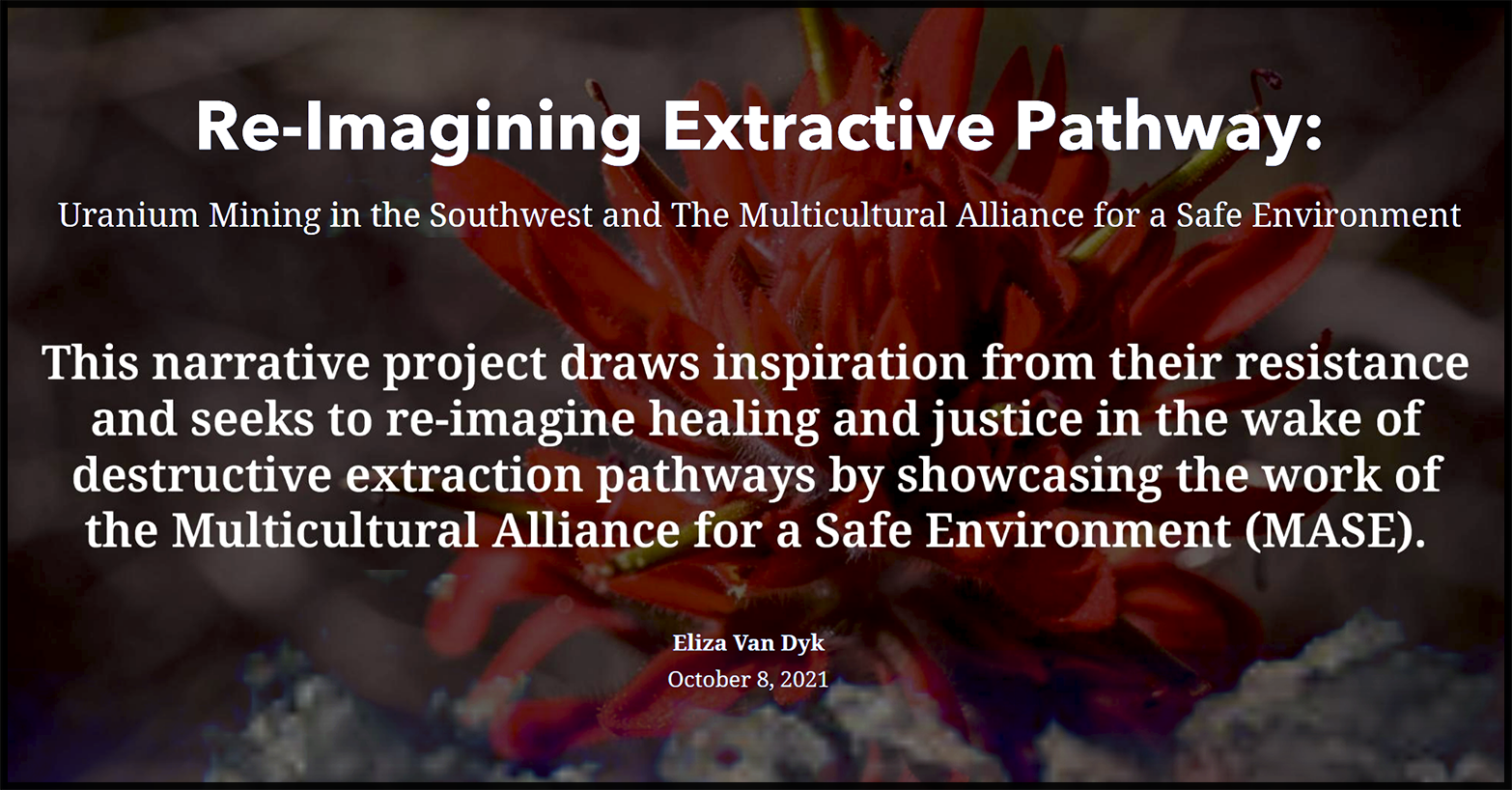Community Comments on 2008 Site-Wide Environmental Impact Statement for the Continued Operation of Los Alamos National Laboratory
NNSA Los Alamos Field Office Comments:
LANL SWEIS SA
3747 West Jemez Road
Los Alamos, NM 87544
By email to: lanlsweissa@nnsa.doe.gov,
Subject line: LANL SWEIS SA, May 9, 2020
Dear LANL SWEIS SA Document Manager,
We respectfully submit these comments for the National Nuclear Security Administration’s (NNSA’s) Draft Supplement Analysis of the 2008 Site-Wide Environmental Impact Statement for the Continued Operation of Los Alamos National Laboratory (LANL) for Plutonium Operations (DOE/EIS-0380-SA-06, March 2020). That draft Supplement Analysis has “preliminarily” concluded that NNSA will NOT prepare a new LANL site-wide environmental impact statement, which is the wrong decision.
However, even before a new site-wide environmental impact statement (EIS) for Los Alamos Lab, we believe that NNSA is legally required to first complete a new programmatic environmental impact statement (PEIS) on its nation-wide plans for expanded plutonium pit production. This is necessary to 1) raise the production cap of 20 pits per year explicitly set by the 1997 Stockpile Stewardship and Management PEIS; and 2) because NNSA now proposes a second site, the Savannah River Site (SRS) in South Carolina, for redundant pit production, which is inherently a “programmatic” decision. NNSA argues that it can rely upon an outdated 2008 Complex Transformation PEIS which considered various levels of expanded plutonium pit production at five specific NNSA candidate sites. However, that outdated document did not consider simultaneous production at two sites. This changed circumstance is justifiable cause alone for a new programmatic environmental impact statement.
The opportunity for public review and comment on proposed major federal actions is required by the National Environmental Policy Act (NEPA). Using some of that law’s legal language, because the expansion of plutonium pit production at LANL and establishing pit production at SRS are clearly “connected,” “cumulative,” and “similar” actions, “their environmental effects must be considered in a single impact statement,” and a new PEIS is the legally and practically appropriate way to accomplish this. NNSA’s proposed actions at LANL and SRS are “systematic and connected agency decisions” undertaken to implement the specific “executive directive” in the 2018 Nuclear Posture Review to produce at least 80 plutonium pits per year by 2030. Accordingly, DOE’s own NEPA regulations mandate the preparation of a PEIS.
Further, another reason why nation-wide programmatic review needed is because not only are LANL and SRS involved in plutonium pit production, but so are NNSA’s Kansas City National Security Complex, the Pantex Plant and the Lawrence Livermore National Laboratory, as a 2019 Supplement Analysis to the 2008 Complex Transformation PEIS explicitly states.
Congruent with this, the National Academy of Sciences Surplus Plutonium Panel recently released a final report on disposing of surplus plutonium at the Waste Isolation Pilot Plant in southern New Mexico. The Panel noted “the involvement of several facilities at several sites …, a schedule of decades requiring sustained support, and the environmental and programmatic significance of the changes therein.” The NAS report therefore concluded that “a PEIS… that
considers all affected sites as a system is appropriate to address the intent and direction of the National Environmental Policy Act.” We assert that all of this is equally true for expanded plutonium pit production. Moreover, nation-wide programmatic analysis is badly needed because these two different plutonium efforts (pit production and excess plutonium disposal) will intersect in some of NNSA’s crucial plutonium facilities and likely compete for processing space.
A new programmatic environmental impact statement is needed to examine the need for expanded plutonium pit production to begin with. We are aware that Congress has legislatively required expanded pit production, but no technical justification has ever been given.
Why is expanded plutonium pit production necessary when independent experts have concluded that plutonium pits last at least a century and more than 15,000 existing pits are already stored at the Pantex Plant near Amarillo, TX? Why isn’t the extensive reuse of existing pits analyzed as a credible alternative to new production of plutonium pits? Why is no future pit production scheduled to maintain the safety and reliability of the existing nuclear weapons stockpile? Why will future production instead be for heavily modified pits for speculative new design nuclear weapons that can’t be full scale tested because of the global testing moratorium, hence possibly lowering confidence in stockpile reliability? Alternatively, could heavily modified pits prompt the U.S. to return to nuclear weapons testing? All these questions should be addressed in a new programmatic environmental impact statement.
In addition, damning conclusions by independent experts at the Institute for Defense Analysis on the feasibility of NNSA’s plans for expanded plutonium pit production buttress the need for full programmatic review. They noted how most NNSA projects costing more than $700 million are canceled, and that of the few that proceed none are completed in less than 15 years. NNSA plans to spend at least $5.8 billion at LANL and $4.6 billion at SRS over the next decade on construction or upgrades of plutonium pit production facilities. NNSA proposes to “repurpose” the MOX Fuel Fabrication Facility at SRS for pit production, after that canceled project wasted more than 7 billion taxpayer dollars. Similarly, a half-billion dollars was wasted in design of a major new plutonium facility at LANL that was cancelled in 2012 when its projected construction costs exploded ten-fold to $6.5 billion. A new programmatic environmental impact statement should analyze the agency’s budget failures and how to better conserve taxpayer dollars, including independent cost estimates given the unreliability of NNSA cost estimates.
A new PEIS should analyze the impacts of diverting taxpayer dollars to new nuclear weapons facilities instead of cleaning up the massive environmental damage caused by past research and production. What are the long-term public health and environmental effects of leaving radioactive and chemical contaminants that can pollute precious water resources, while new, unnecessary, and costly nuclear facilities that will produce more contaminants are being built? This is amplified by DOE’s plans to radically cut cleanup across the nation, for example by nearly half at LANL. Moreover, a reordering of national security priorities is in order, given that $2 trillion in proposed nuclear weapons “modernization” will do nothing to protect us against our most imminent national security threat, the COVID-19 pandemic.
After a nation-wide programmatic environmental impact statement on expanded plutonium pit production, NNSA must complete a new LANL site-wide EIS that does not solely focus on pit production. NNSA has created a Franken-document monster in that the LANL Supplement Analysis completely relies on various parts of existing outdated documents. Very few analyses
are new as most are over 10 years old. Expanded pit production at LANL is too important not to have a fresh look with a new truly site-wide environmental impact statement.
LANL has a long track record of nuclear safety incidences, as reported by the independent Defense Nuclear Facilities Safety Board, which must be addressed in a new site-wide environmental impact statement. In addition, that document should make clear that Safety Board access to inspect NNSA nuclear facilities will not be restricted, as a recent internal DOE Order tried to do.
Potential seismic impacts are a serious issue at the Los Alamos Lab that could result in high offsite radioactive doses. The Safety Board has formally recommended that the Lab seismically upgrade its main plutonium facility PF-4 since 2013. The Lab’s failure to completely do so to date should be analyzed in a new site-wide EIS. As it is, seismic upgrades are not scheduled for completion before expanded pit production is scheduled to start.
NNSA must complete a new comprehensive Probabilistic Seismic Hazard Analysis for the Los Alamos Lab. NNSA requires new analyses every ten years, yet LANL’s most recent PSHA was in 2009. The PF-4 Seismic Performance Reassessment Project is ongoing and aims to determine the seismic performance of the PF-4 building. LANL’s Seismic Analysis of Facilities and Evaluation of Risk Project is a multi-year analysis of the seismic design loads on existing facilities in LANL’s Plutonium Facilities Complex. The bottom line is that the probable seismic performance of the PF-4 building is still not yet known.
The draft 2020 Supplement Analysis concludes its seismic analysis by stating that its projected seismic impacts are consistent with the 2008 LANL site-wide EIS and a 2018 Supplement Analysis. That means little. A new LANL site-wide EIS should properly evaluate potential seismic risks with the latest available information from a new comprehensive Probabilistic Seismic Hazard Analysis and other relevant sources.
NNSA must do a full analysis of LANL’s other facility involved in pit production, the Radiologic Laboratory Utility Office Building (AKA the “Rad Lab”). NNSA plans to convert the Rad Lab into a hazard category 3 nuclear facility for which it was not originally designed. A seismically induced fire could have major consequences for workers and the surrounding public. A new LANL site-wide EIS should address all Safety Board seismic concerns with the Rad Lab.
As its title indicates NNSA’s draft 2020 Supplement Analysis is focused on plutonium operations. For other issues the new draft Supplement Analysis relies upon an earlier 2018 Supplement Analysis to the 2008 LANL SWEIS. Concerning cleanup, that 2018 Supplement Analysis states that “Implementation of the Consent Order [governing cleanup negotiated with the New Mexico Environment Department] was a fundamental part of the 2008 SWEIS.”
The original 2005 Consent Order was superseded by a 2016 Consent Order about which the 2018 Supplement Analysis says, “The 2016 Consent Order does not change the investigations, cleanup, and corrective measures to be conducted at LANL and therefore is bounded by the 2008 SWEIS.” That is patently false as the 2016 Consent Order eliminated the 2005 Consent Order’s detailed and rigorous compliance schedule and subordinated cleanup to the DOE budget instead of having cleanup drive funding. One direct result has been DOE’s plan to cut Lab cleanup funding by nearly half for FY 2021. A new LANL site-wide EIS is needed to fully analyze cleanup programs at LANL with the overall goal of protecting northern New Mexico’s limited groundwater resources.
LANL recently proposed to vent 100,000 curies of excess tritium while claiming an unapproved dose reduction factor that kept the calculated public dose under the Clean Air Act standard of 10 millirem to the “Most Exposed Individual” (since postponed because of public outcry). Without that unapproved dose reduction factor LANL would be in legal violation of the Clean Air Act standard, as it was in the 1990’s after another unilaterally-appropriated unapproved dose reduction factor was disallowed by the EPA. A new site-wide EIS is needed to disclose and analyze other large intentional radioactive releases, their potential health impacts and whether or not they comply with established environmental law.
Climate and tree ring data indicate that the Southwest may be moving into a megadrought. A new site-wide EIS is needed to analyze potentially adverse effects, including growing water scarcity and increasing wildfire risks.
These comments on expanded plutonium pit production at LANL respectfully submitted,
Miguel Acosta, Earth Care Youth Leadership for Community Change, Santa Fe, NM
Tom Allen, Arroyo Seco, NM
Mark Asmus, El Prado, NM
Lawrence Baker, El Prado, NM
Bea Balsamo, Taos, NM
Holly Beaumont, Interfaith Worker Justice – NM, Santa Fe, NM
David Bezanson Ph.D., Physicians for Social Responsibility, Santa Cruz, CA Elizabeth Billups, Santa Fe, NM
John Block, Esq., Santa Fe, NM
Charles Bonafanti, Taos, NM
Rick Brown, Taos, NM
AnJanette Brush, El Salto, NM
Robert J. Burrowes, PhD, Daylesford, Victoria, Australia
Mike Carberry, Green State Solutions, Iowa City, IA
Glenn Carroll, Nuclear Watch South, Atlanta, GA
Laura Cat, Pilar, NM
Denis Chaves, Albuquerque, NM
Theresa Chaves, Albuquerque, NM
Tom Clements, Savannah River Site Watch, Columbia, SC
Jay Coghlan, Nuclear Watch New Mexico, Santa Fe, NM
Gregory Corning, Pojoaque, NM
Jessie Pauline Collins, Co-Chair, Citizens’ Resistance at Fermi 2, Redford, MI
Karen D’Andrea, Ex. Director, Physicians for Social Responsibility Maine Chapter, Portland ME Diane D’Arrigo, Nuclear Information and Resource Service, Takoma Park, MD
Malachi Daw, Naabeehó/Diné (Navajo Nation)
Andrew Davis, Santa Fe, NM
Rev. John Dear, Pace e Bene, Cayucos, CA
Paul Devereaux, Peñasco, NM
Robert Dodge, M.D., President, Physicians for Social Responsibility-LA, Los Angeles, CA
Gary Donald, Questa, NM
Jim Doyle, Santa Fe, NM
Gwen DuBois MD, MPH, Chesapeake Physicians for Social Responsibility, Baltimore, MD Denise Duffield, Physicians for Social Responsibility-Los Angeles, Los Angeles, CA
Sally Evans, retired highway engineer, Aiken Worship Group of CFM, Aiken, SC
Desaray Farley, Albuquerque, NM
Steven Farley, Albuquerque, NM
Ella Joan Fenoglio, Albuquerque, NM
Martin Fleck, Program Director, Physicians for Social Responsibility, Washington, DC
Dr. Ann Frisch, White Bear Lake, MN
Lisa Garduno, CARD, Albuquerque, NM
Sally Jane Gellert, Occupy Bergen County, Woodcliff Lake, NJ
Grace Gifford, clerk, Horry Friends Monthly Meeting, Conway, SC
Susan Gordon, Coordinator, Multicultural Alliance for a Safe Environment, Albuquerque, NM Robert M. Gould, President, Physicians for Social Responsibility-Bay Area, San Francisco, CA David Grant, Treaty Compliance Campaign, Baltimore, MD
Jeanne Green, Taos, NM 87513
Janet Greenwald, Coordinator, Citizens for Alternatives to Radioactive Dumping, Dixon, NM Don Hancock, Southwest Research and Information Center, Albuquerque, NM
Anna Hansen, Santa Fe County Commissioner, Santa Fe, NM
Emily Haire, Fort Collins, CO.
Phyllis Heaton, El Prado, NM
Marilyn Hoff, El Prado, NM
Dee Homans, Santa Fe, NM
Ralph Hutchison, Coordinator, Oak Ridge Environmental Peace Alliance, Oak Ridge, TN Carol Jagiello, Bloomingdale, NJ
Richard Johnson, Santa Fe, NM
Kevin Kamps, Beyond Nuclear, Takoma Park, MD
Deb Katz, Citizens Awareness Network, Shelburne Falls, MA
Marylia Kelley, Executive Director, Tri-Valley CAREs, Livermore, CA Nicholas King, Pastor, Carlsbad Mennonite Church, Carlsbad, NM Ronda King, Carlsbad, NM
Scott Kovac, Nuclear Watch New Mexico, Santa Fe, NM
Bonnie Korman, Taos, NM
Sheri Kotowski, Taos, NM
Hans Kristensen, Federation of American Scientists, Washington, DC Erich Kuerschner, Public Choice Economist, El Prado, NM
Betty Kuhn, Santa Fe, NM
John LaForge, Co-Director, Nukewatch, Luck, WI
Brennain Lloyd, Northwatch, North Bay, Ontario, Canada
Terry J. Lodge. Esq., Toledo Coalition for Safe Energy, Toledo, OH Marjorie Luckey, Taos United, Taos, NM
Kelly Lundeen, Co-Director, Nukewatch, Luck, WI
Vic Macks, Michigan Stop the Nuclear Bombs Campaign, St. Clair Shores, MI Patricia A. Marida, Columbus, OH
Jill Marcus, Santa Fe, NM
Jose Martinez, Youth United for Climate Crisis Action, Santa Fe, NM
Kay Matthews, La Jicarita News, El Valle, NM Dave McCoy, Citizen Action, Albuquerque, NM Robyn McCulloch, Arroyo Seco, NM
Mark Mc Grory, El Prado, NM
Kimberly Medeiros, Citizens Awareness Network, Amherst, MA Scott Meyer, Don’t Waste Arizona, Phoenix, AZ
Rebecca Mezoff, Fort Collins, CO
Nancy Sue Michels, Santa Fe, NM
Ginny Moore, El Prado, NM
Leroy Moore, Rocky Mtn Peace & Justice Center, Boulder, CO
Mark Muhich, Sierra Club Nuclear Free Core Team, Jackson, MI
Winslow Myers, Rotarian Action Group for Peace, Bristol, ME
Mariel Nanansi, New Energy Economy, Santa Fe, NM
Jean Nichols, MAS Comunidad, Peñasco, NM
Max Obuszewski, Baltimore Nonviolence Center, Baltimore, MD
B. OConnor, ofs, Hampden, MA
David Oliver, clerk, Columbia Friends Meeting, Columbia SC
Christopher Paine, NRDC (ret), Charlottesville, VA
Bobbie Paul, Atlanta Grandmothers for Peace, Atlanta, Georgia
Sheila Parks, Executive Director, On Behalf of Planet Earth, Watertown, MA Ronald Parry, Emeritus Professor of Chemistry, Rice University, Silver City, NM Kern Pettit, Ranchos de Taos, NM
Susanne Pinkham, Taos, NM
Iris Potter, Palisades Shutdown Campaign Coalition, Kalamazoo, MI Priscilla Preston, Columbia, SC
Sasha Pyle, Santa Fe, NM
Deborah Reade, Concerned Citizens for Nuclear Safety, Santa Fe, NM Jean P. Richards, Des Montes, NM
Mary Riseley, Santa Fe, NM
Felina Romero, Youth United for Climate Crisis Action, Albuquerque, NM
Denisha Romero, Albuquerque, NM
Diana Romero, Albuquerque, NM
Joan Romero, Albuquerque, NM
Valeria Romero, Albuquerque, NM
Erin Sanborn, El Prado, NM
Linda Seeley, Vice President, San Luis Obispo Mothers for Peace, San Luis Obispo, CA Janice Sevre-Duszynska, Prevent Nuclear War/Maryland, Towson, MD
Lizbet Schwartz, Des Montes, NM
Sandy Schwartz, Fairholm Builders LLC, El Prado, NM
Suzie Schwartz, Taosneos for Peaceful and Sustainable Futures, El Prado, NM
Sally Shaw, New England Coalition, Manchester, VT
Martha Shepp, Questa, NM
Alice Slater, Nuclear Age Peace Foundation, New York City, NY
Mandy Smithberger, Project on Government Oversight, Washington, DC
Cletus Stein, The Peace Farm, Amarillo, TX
Laura Stewart, Santa Fe, NM
Debra Stoleroff, Vermont Yankee Decommissioning Alliance, Montpelier, Vermont Sophia Stroud, Portland, OR
Ann Suellentrop M.S.R.N., PeaceWorks Kansas City & PSR – KC, Kansas City, MO
Cathie Sullivan, Santa Fe, New Mexico
David Swanson, RootsAction.org & World BEYOND War, Charlottesville, VA Lise Van Susteren, MD, Physicians for Social Responsibility
Darlene and Mario Vigil, Ranchos de Taos, NM
Bart Ziegler PhD, Samuel Lawrence Foundation, Del Mar, CA





